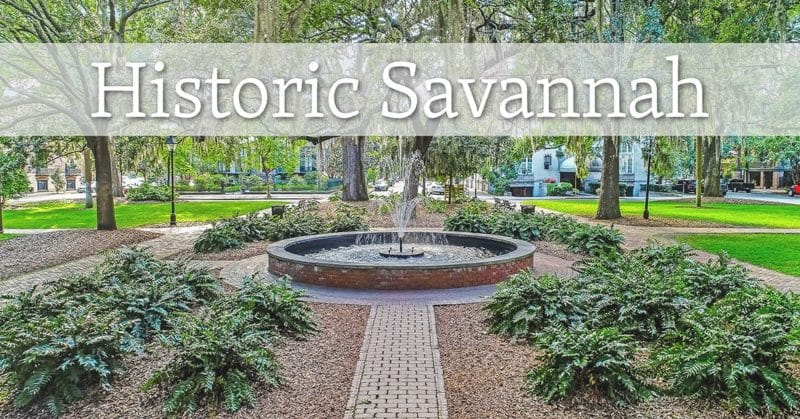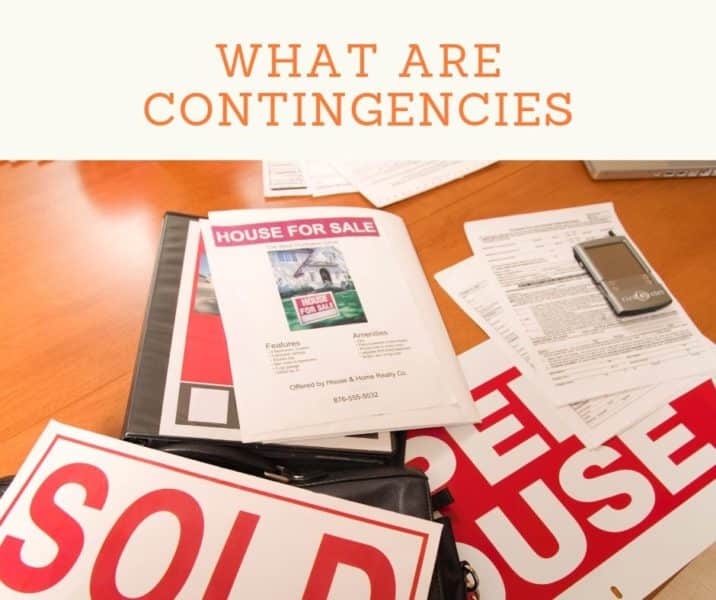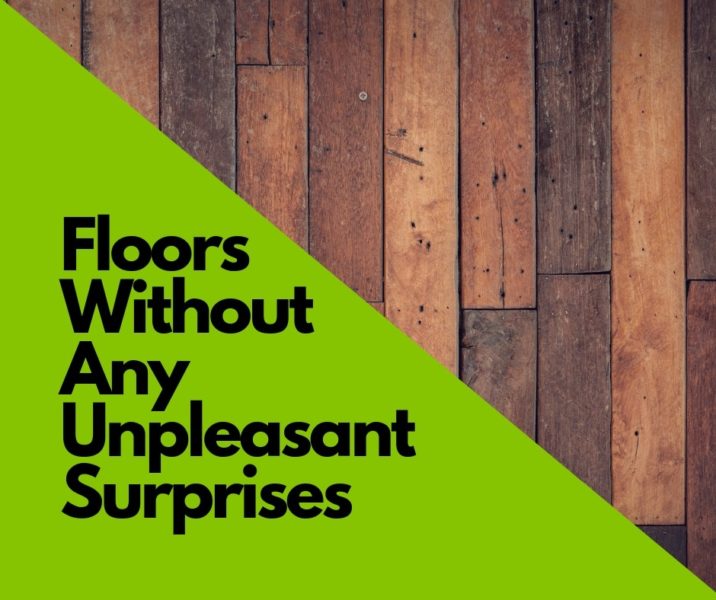
Savannah Historic District Homes for Sale
The Historic District of Savannah is the heart of one of the most beautiful cities in the world, with cobblestone streets, beautiful gardens, and manicured parks with hanging Spanish Moss. The city is world-famous for its history, and real estate and beautiful homes are directly tied to the city’s past. The history is rich, the stories are endless, and the homes are fabulous. The homes for sale in Savannah’s Historic District are among the most sought-after homes in the area. If you are thinking about buying a historic home, here is everything you’ll need to know!
Contents
- Real Estate Terms To Know
- What Actually Counts as a Historic Property?
- What is a Historic Preservation Easement?
- How do you Determine if Renovations are Interior or Exterior?
- What are Contingencies and Should your Contract have Them?
- Do you Still have to Deal with Escrow when Buying Historic Properties?
- Do you Have to Join the Historic HOA?
- What To Look For When Buying a Historic Home
- 5 Common Real Estate Myths About Buying Historic Homes
- Decorating Historic Homes For A Modern Lifestyle
- How To Add Modern Style To A Historic Home
Real Estate Terms to Understand Before Getting a Historic Home
Selecting a historic property means you’re buying a home with a rich and unique past. Historic homes also require specific knowledge of, especially at the time of sale, due to the nuances associated with them. While owning a historic home can have it’s ups, it can also have its downs. It’s important to understand everything, including the basic terminology before diving in. Some people are wary of looking at older properties because they feel like owning a historic home may be a bureaucratic hassle. It is true that there are some additional aspects and legal issues to consider when getting an older property, but navigating these unfamiliar waters does not have to be tricky.
What Actually Counts as a Historic Property?
Before getting further into the details of historic real estate, it is important to take the time to consider what a historic house actually is. Some people may think the term includes mid-century properties, while others only view a house as historic if it was built before the world wars.
A simple way of telling if the house is historic is checking to see if it is registered with either the National Register of Historic Places or your city’s Historic District Board. Homes registered as historic may have some extra restrictions.
What is a Historic Preservation Easement?
Many historic homes will come with an easement already attached to them. This is a voluntary legal agreement, but it is quite permanent. Essentially, buying a home with an easement means that you agree to the terms of the easement and agree to only sell the property to buyers who agree to the easement. It’s a protective legal tool that protects the privately owned historic home against undesirable developments and indirect structural deterioration.
Most historic preservation or conservation easements will be held by conservation organizations to ensure the owner sticks to the terms of the easement. This can regulate how the property is used and what renovations can be done to the property.
How do you Determine if Renovations are Interior or Exterior?
One of the most common stipulations for living in historic properties is that permits will be needed before beginning any exterior renovations. This might seem simple, but it can actually be tricky to tell if a proposed renovation affects the inside or outside of the house. The building inspector will be able to determine the difference.
In general, this can mean that it may be challenging to make changes to the outer walls, roof, porches, porticoes, doors, railings, or stairs of a historic home. It means that you may also have to consider these regulations when making add-ons, building decks and porches, installing new windows and doors, or adding shutters, window boxes, or flagpoles to areas.
The best thing to do when considering renovations is to consult with your local historic commission or a contractor who specializes in historic renovations in your area. Many Realtors specialize in Historic Homes, too, and the Heather Murphy Real Estate Group is one of them. Rules can be different from home to home, so get advice from someone familiar with your local rules and regulations.

Discuss all contingencies with your Realtor prior to entering into a contract.
What are Contingencies and Should your Contract have Them?
A contingency is a term used in real estate offers that essentially means you are only bound by the offer if the other party fulfills certain requirements. Since historic homes tend to have some construction issues, you typically want to put in an offer contingent on inspection.
This lets you back out if any major issues with the property are discovered. Other potential contingencies may include requirements that the seller makes certain repairs, that the buyer can sell their current home first, or that the property meets a minimum appraisal value.
Do you Still have to Deal with Escrow when Buying Historic Properties?
Escrow is one of the most frequently misunderstood parts of buying a property. An escrow account is an account of money held by a trusted third party. It ensures that you actually have the money you need to pay property taxes, insurance premiums, and other fees while you are trying to purchase the property. This is an important part of almost every real estate transaction, so you can expect to use it when getting a historic property too.
Do you Have to Join the Historic HOA?
Many historic homes are in districts that include homeowners’ associations. If this is the case, you are probably required to join the HOA and agree to follow their rules when you purchase the property. You can check with your Realtor to find out if there is an HOA governing the property.
Though some people do not like the idea of having extra restrictions, others feel that an HOA is a useful tool for maintaining the historic feel of a neighborhood. HOAs for historic properties tend to regulate house color, lawn décor, parking, and other things not mentioned in the easement.
Now that you know a little more about the phrases you will encounter when checking out historic property, you can see just how simple it really is. By taking the time to do a little research before you begin your house hunt, you can easily find the historic property of your dreams!
What To Look For When Buying a Historic Home
With all the lovely historic homes for sale scattered throughout the Savannah Georgia area, anyone interested in buying classic real estate has many options to pick from. This is normally a great thing, but it can be a little overwhelming when you are in the market for a new house. Learning a little about what to keep an eye out for while visiting historic properties will help you to find your dream house.
A Sturdy and Well Maintained Roof
A home that does not get proper inspection and maintenance from any roof problems is likely to have problems throughout it, and these can be a pain to fix. Start by standing back from the house and looking at the roof line from a distance to see if there is any concerning sagging or damaged shingles.
Look at roof shingles and tiles to see if there are any that are missing, cracking, curling, or rotting. In homes with chimneys, check for missing mortar and slanted chimneys. You can tell a lot about how well a home was built and maintained over the years by seeing the state of the roof.
A Neighborhood You Love
When looking for any property, its location is one of the most important things to consider because it is the one thing that is impossible to change. If you want access to plenty of restaurants and parks, the Historic District might be ideal, while those who want to be near entertainment venues and boutique galleries will love being situated along the southern end of the Victorian District. Take the time to search for the right neighborhood for you, near the property during the day, night, and weekends to get a feel for what it will be like to live there.
Windows In All the Right Places
Keep in mind that historic homes may have fewer windows than you may be used to, and adding larger windows is not always an option. Depending on where the house is, there may be guidelines and regulations about how your exterior has to look. Make sure that you are going to get your preferred amount of natural light from the current windows before you decide a house is right for you.

Floors Without Any Unpleasant Surprises
Pay extra attention to the floor as you walk around. Flooring is important because it is often an indicator of whether or not the house has deeper problems.
In historic homes, some irregularities should be expected, but any extensive tilting or sagging may be too much trouble to fix. Water damage near tubs, toilets, and sinks is also concerning.
You also need to think about your options if you do not love the current flooring. If possible, look under any carpeting to see what the floor looks like below.
Remember that floors can only be sanded down a few times, so look along the baseboards for tell-tale ridges that indicate the floors have already been sanded.
Historic Features You Appreciate
In most cases, it is pointless to pick a historic home and then erase any signs of the home’s past. Even if you plan extensive renovations, you will probably want to keep things like the home’s original molding, doorknobs, or fireplaces. Therefore, it is a good idea to think about whether the home’s overall time period and home design will work with your general decorating goals.
Those who love industrial or modern designs may appreciate a loft situated in an antique warehouse while people who love ornate and delicate designs might enjoy all the details in a Victorian home. The right style of historic home will let you create interiors that you love.
A Floor Plan That Works for You
The housing needs for a typical family have changed over the years, so historical homes tend to have unusual quirks like ground-level master bedrooms and tiny spaces in the upstairs areas. In fact, some of the house styles common in Savannah, such as Italianate and Gothic Revival homes, were intentionally designed with unusual floor plans that have a lot of twists, turns, and irregularly shaped rooms. Completely redoing the floor plan is not always an option due to both structural and preservation concerns, so think about how you can make the house’s spaces work for your needs before you decide on it.
5 Common Real Estate Myths About Buying Historic Homes
As soon as you start looking into purchasing a new home, you get countless friends, family members, and colleagues offering advice. Though they are always well-meaning, you might end up with some incorrect notions about the historic real estate market. Many of the basic principles of real estate do not actually apply to historic homes because these unique properties have such a specialized market. When shopping for a historic home, you need to be cautious about these five common misconceptions:
- It’s Bad for a House to Spend a Lot of Time on the Market
In the typical real estate transaction, the time on market for a property is often a valuable tool for estimating the worth of a home. Buyers frequently think that a property that has spent a while on the market is undesirable or somehow faulty. When it comes to historical real estate, this idea is no longer true.
Historic properties are intended for a very unique audience, so they tend to spend a while sitting on the market. Sellers are often more selective because they feel like they are the caretaker for something with historic value. They may end up turning down potential buyers who are not willing to meet requirements about conservation and renovation, so it is common for a property to have a high amount of days on the market.
- You Can’t Make Any Changes to a Historic Home
When you first express an interest in getting a historic house, you may get discouraged by plenty of people suggesting that you will be stuck living in a home straight out of the 1700s. The reality is that local governments and historic organizations are actually fairly understanding about renovations.
They know that it is important to create a home that is safe and comfortable for modern living. Of course, there may be minor restrictions on how you can decorate the exterior or renovate historically significant features, but you will find that there is still plenty of room for customization and renovation.
- Start Negotiations With a Low Offer and Plenty of Contingencies
Common negotiation wisdom recommends starting with an offer that is extremely favorable to yourself, therefore buyers do things like put in an initial low offer, or one that is contingent on their ability to sell their previous house. This sort of offer can save a little money when a seller is desperate to get rid of a house, but it normally is not advisable for desirable luxury properties such as a nice historic home.
Buying a historical home is not the time to try to play it safe or get the best possible deal for yourself. Historic homes in places like Savannah are in high demand, so sellers often have several buyers to choose from. In this sort of situation, you want to create a competitive offer that will beat out other buyers instead of trying to lowball the seller as a negotiation tactic.
- All Real Estate Agents Provide the Same Services
Many people think that all real estate agents do basically the same thing, which leads many buyers and sellers to misunderstand the value of an experienced professional who knows the historic home niche. You might get recommendations based on how friendly an agent is or how much money they may have helped a friend save. However, if you are purchasing a historic home, you need to take the time to find a Realtor who specializes in historic properties.
There are a lot of legal and financial difficulties that require expert navigation, so it is important to find a person who has the knowledge and experience needed to guide you through these challenges. The right agent will also have contacts with inspectors and contractors who can help you with each step of the home buying process.
- You Get a Better Return on Investment for a Newer Home
We often think that newer is better because older houses may need more work to look stylish or be livable. This might be true when considering a brand new home versus a rundown house from a few decades ago, but the concept goes out the window when looking at truly historic properties.
Slightly old and outdated properties might not be that valuable, but once you pass the 50-year mark, being old is actually a good thing. Research finds that property values for historic districts in a town actually rise at higher rates than other properties in the area. People are always willing to pay a premium to have their own little bit of history, so it is typically a good investment to select a historical property.
Decorating Historic Homes For A Modern Lifestyle
When you buy your historic home, what can you do with it? How should you design it? When first contemplating moving into a historic home in Savannah, the idea of decorating such a unique place can seem a little overwhelming. However, balancing your personal design preferences with the unique historical details of an older house does not have to be intimidating.
Here are a few tips that can help you to craft a beautiful interior for your historic home.
Select a Unified Color Scheme
In most older rooms, there will be beautiful carvings, stained glass windows, or original fireplaces. The attention to detail in Savannah’s historic time is part of what makes older homes so remarkable, but it can end up looking a little too busy to the modern eye.
To make things appear more restrained without removing historic details, use unified color schemes for the woodwork and metalwork. This takes a little additional planning during renovations, but it helps to create a room that is truly impressive.
Think About Your Everyday Habits
It is easy to get caught up in all the glamour and fun of decorating a historic home, but the end result may be a house that is not suitable for your lifestyle at all. One of the earliest steps in your design process should be considering your average day and picture yourself as you move through the house.
For example, those who love reading might want to designate an area as a reading nook while people who regularly entertain may want a room suitable for dinner parties. Instead of focusing on creating an antique home that looks like a magazine entry, try to make a home that fits your needs perfectly.
Try Out a Playful Approach
Your first instinct may be to create décor that matches the grandeur of the house. This can be a good approach if you want an elegant home, but keep in mind that there is no “one size fits all” approach to historic home décor. If you like quirky and whimsical pieces, go ahead and add them to your house. Things like modern artwork, bright color palettes, reclaimed materials, and offbeat sculptures can help to make a home look fun and youthful.
Pick New Purposes for Old Rooms
Older houses tend to have all sorts of spaces that are not as useful in modern times. Things like formal dining rooms, servants quarters, or sculleries may not be something you need, so trying to use each room as originally intended can make you miss out on valuable space.
For example, the small storage spaces tucked away upstairs could be a charming children’s playroom, or a closet offset from the kitchen could be turned into a marvelous pantry. Take the time to plan a layout that actually works for your needs instead of just mindlessly sticking to historic labels for each room.

Use Visual Tricks to Open Up Spaces
One of the most common things historic homeowners need is a way to make spaces look larger. Of course, many homes have gorgeously large ballrooms and dining rooms, but almost every older house also has one or two rooms that seem awkwardly tiny.
Little tricks like hanging mirrors to reflect light or adding more lamps make a room brighter, and options like vertical striped wallpaper or cleverly hung curtains can make a room look more spacious. Lighter colors, glass tabletops, and smaller furniture can also help to keep areas from looking too crowded.
Avoid Sticking to Strictly Historic Pieces
It is definitely tempting to try to fill your home with pieces from the same time period as the house’s original construction, but most people find that this does not work for their needs. The end result can be a little too stiff and museum-like, and there is also the issue of comfort.
Older furniture items like rococo chairs and colonial benches tend to be showy pieces that are not actually enjoyable to relax in. Instead of picking nothing but strict reproductions, consider mixing in modern furniture that is just lightly inspired by traditional shapes and styles.
How To Add Modern Style To A Historic Home
Follow the Rules
Some, but not all historic homes may have additional rules regarding any changes that could be made to the property. While you may be free to decorate the interior in any fashion that suits you, be sure to be aware of any governance that restricts or limits your ability to make modifications before your buy a historic home.
In some cases, your improvements may simply need to get approval by a committee or board. In other cases, depending on the scale of renovations, architectural reviews and plans may be required. In any case, if you’re in the market for a historic home, consult a local Realtor with specific experience in this area.
Historic homes require expert knowledge not always found with your average real estate agent. Work with someone who knows this market – someone like the Heather Murphy Real Estate Group in Savannah Georgia.



